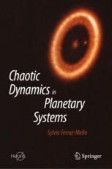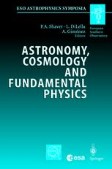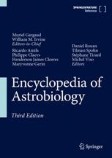Search
Search Results
-
Planetary Systems. Exoplanets
This chapter is centered on the methods of chaos diagnosis based on the Fast Fourier Transform (FFT) and the dynamical maps on dense grids and their...
-
Extrasolar Planetary Systems
Radial Velocity surveys have revealed up to now about 100 extra-solar planets (M sin i < 10 M Jup ) and 7...
-
The Formation and Evolution of Planetary Systems: SIRTF Legacy Science in the VLT Era
We will utilize the sensitivity of SIRTF through the Legacy Science Program to carry out spectrophotometric observations of solar-type stars aimed at...
-
Scanning for planetary cores with single-receiver intersource correlations
The network of seismographs on Earth allows us to gather enough data to reveal the properties of the metallic core hidden in the centre of the...

-
Spatially Resolved Spectroscopy of Proto-Planetary Nebulae
We present 3 μm spectroscopy of three carbon-rich proto-planetary nebulae. Spectroscopy with high spatial resolution afforded by the Subaru adaptive...
-
Post-AGB Objects and Planetary Nebulae
Planetary nebulae and post-AGB objects are luminous dust emitters in the infrared. Indeed it is by virtue of their strong dust emission that most...
-
The Transition Phase from AGB Stars to Planetary Nebulae as Seen by TIMMI2
We explore the possibilities of TIMMI2 N-band observations of improving our knowledge on the physics of the short transition phase which precedes the...
-
Probing Thick Planetary Atmospheres with High Resolution Infrared Spectroscopy
The giant planets, Venus, Titan, and, to a lesser extent, Mars, have thick planetary atmospheres that can be probed very efficiently by...
-
Planetary Atmospheres Through Time: Effects of Mass Loss and Thermal Evolution
Atmospheric mass loss is a fundamental phenomenon sha** the structure and evolution of planetary atmospheres. It can engage processes ranging from...
-
The X-Ray Emission from Planetary Nebulae
Planetary nebulae, the progeny of low- and intermediate-mass stars, are formed by the interaction of the fast stellar wind from its central star,...
-
Melting curve of superionic ammonia at planetary interior conditions
Under high pressures and temperatures, molecular systems with substantial polarization charges, such as ammonia and water, are predicted to form...

-
The planetary system Kepler-27 revisited
Transit timing variations of planets in Kepler-27 were already reported in some papers, but the entire characterisation of them is still an open...

-

-

-

-
Hydrogen Molecules in the Planetary Nebula NGC6302
NGC 6302 is the classical example of a planetary nebula with a bipolar shape. The bipolar ‘butterfly’ shape is often explained as caused by the fast...
-

-

-
Rapid formation of exoplanetesimals revealed by white dwarfs
The timing of formation of the first planetesimals determines the mode of planetary accretion and their geophysical and compositional evolution....

-

